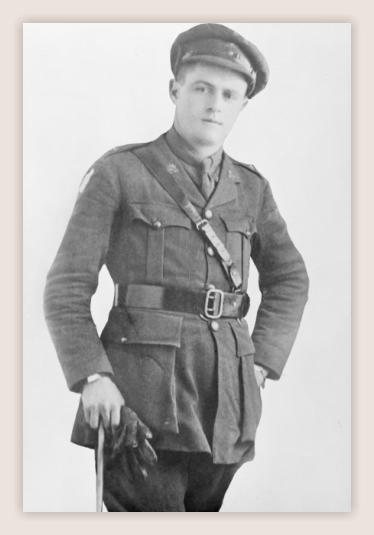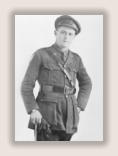Their bodies are buried in peace; but their names liveth for evermore.
Their Duty Done
A tribute to the men and women of the East Gippsland Region who Died
as a result of their participation in World War One : 1914 -1919



Lieutenant James Roadknight - Johnsonville / Lakes Entrance
Killed in Action 12 October 1917
James Roadknight never knew his father. He was killed in a quarry tramway
accident at Sarsfield a month after James was born in 1892. James snr. and Annie
had seven living children when the breadwinner of the family died. While Annie
had extended family in the district she must have been a strong willed woman to
raise her family alone.
James attended Sunday School at Johnsonville and pursued a career in
teaching when he finished his education. His preliminary training was at Sale
Agricultural High School and he was then appointed junior teacher at Orbost in
1909 and became the head teacher at Kinnabulla, near Birchip, in 1911. In 1913 he
was assistant teacher at Wonthaggi.
By 1914 he was22 years old and had completed two years in cadets when he
enlisted on 18 August, one of the earliest to do so. During training he struck up a
friendship with Andrew Rose, a labourer from Dunolly, who was in the same
Battalion and before they embarked, when on leave in a Melbourne they had studio
photograph taken. This is shown above, with James on the left and Andrew seated.
James embarked from Melbourne as a Corporal with the 18th Battalion on 19
October on the Benalla.
After training in Eqypt he proceed with his unit to Gallipoli and took part in
the landing. While he survived, his mate Andrew Rose, did not and was killed in
action. James was promoted to Company Quartmaster-Sergeant on 20 April 1915
which may have kept him from the frontline of action. He came through the
Gallipoli campaign relatively unscathed and was evacuated to Lemnos on 5
November suffering jaundice, probably from the conditions endured on the
peninsula.
By the time he recovered Gallipoli had been evacuated and he re-joined his
unit at Mudros returning to Egypt on 7 January 1916. At Serapeum he transferred
to the 60th Battalion on 24 February and was promoted to Regimental
Quartermaster Sergeant on 3 May 1916.
James probably didn’t know it but while he was preparing to proceed to
France his brother Walter was enlisting back home in Australia.
James proceeded to France with his unit on 18 June and on 5 September he
was sent to the Officer Cadet Battalion at Balliol College, Oxford. He was
apppointed to the commissioned rank of 2nd Lieutenant on 28 October. On 7
December he returned to France and was transferred to the 37th Battalion on 11
January 1917 and promoted to Lieutenant on 22 May 1917. He was wounded at
Messines on 7 June with a severe injury to his right shoulder and was invalided to
England for treatment. After months of rehabilitation and convalescence he re-
joined his unit on 20 September.
He would have been at the fore in the Battle for the village of Passchendaele
and when it started in earnest on 12 October it was a day when he would not live to
see the setting sun. He was killed in action by shell-fire and died instantly. He was
buried in a shell hole about seventy yards from a pill box north of Augustus Wood,
between Ypres and Passchendaele.
Although the place of burial was crudely recorded at the time, when the burial
recovery teams came through after the war they could not locate his remains and so
with no known grave he is remembered on the Menin Gate memorial, Ypres,
Belgium. His brother Walter also fell in August the following year and two of the six
cousins who also went did not return home.
One can only image the grief of their mother, Annie. She had never remarried
and after many letters requesting photographs or some idea as to where her son
James lay, she too died in 1943.
….. buried in a shell hole seventy yards from a pill box










